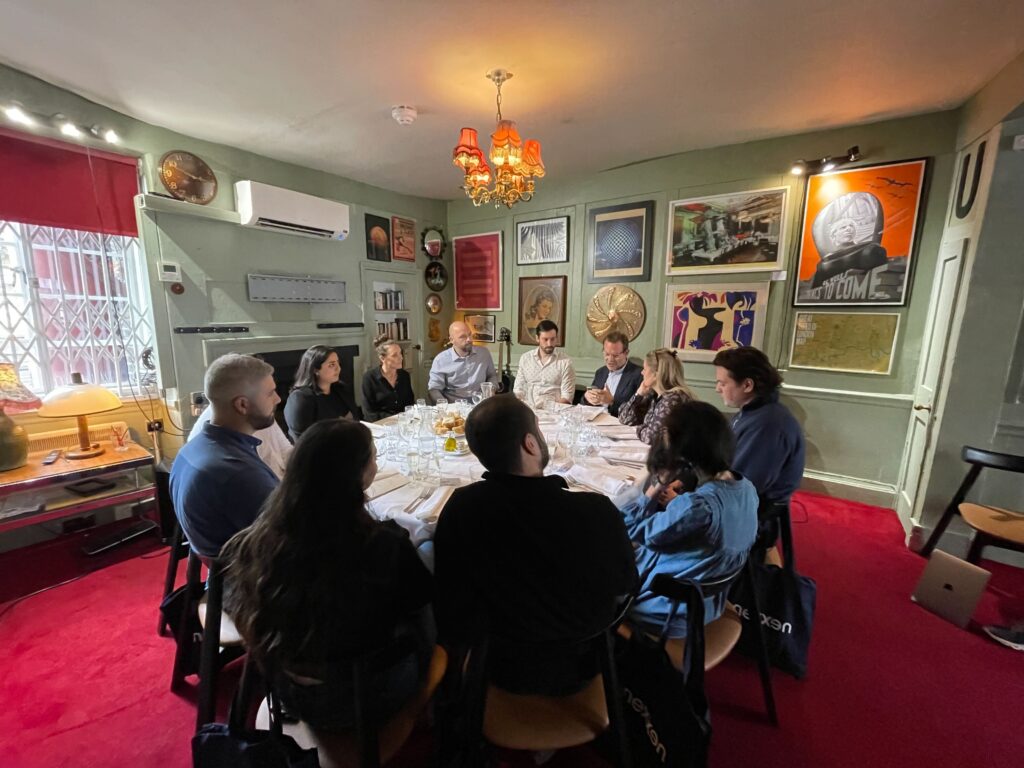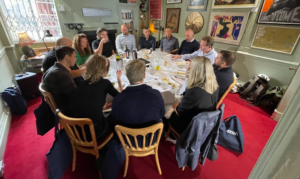With the media ecosystem for video and TV consumption more complex and fragmented than ever before, where should advertisers and their agencies begin in attempting to plan an omnichannel campaign?
New Digital Age (NDA), in partnership with Nexxen, recently hosted a roundtable discussion of ad industry experts to explore the subject in detail. NDA’s editor Justin Pearse chaired the conversation and was joined by, among others: Anna Campbell, Global Client President, Carat; Freddy Clapson, Managing Partner, Global Programmatic & Innovation Lead, team x; Mohini Lakhani, Senior Digital Account Director, The Kite Factory; Emma Moorhead, Head of Channel Planning, Wavemaker; and Steve Broadhead, MD, EMEA at Nexxen.
Broadhead opened the conversation by explaining how Nexxen’s end-to- end ad tech platform has brought him into contact with professionals spanning the breadth of the advertising ecosystem.
“We have the benefit of a demand side platform, a data platform and a supply side platform, so we see the advertising world all the way from advertiser through to premium publisher. Video has been at the heart of the company since the beginning, so as we have evolved, we’ve found ourselves in conversations around display, linear TV, Out of Home and now CTV experts.
“Our goal is to use data to make sure that each ad that runs through us sits well on each and every screen it goes to. That, in turn, brings us into contact with digital buyers, TV buyers, AV buyers and we know from those conversations that lots of advertisers and their agencies are finding holistic omnichannel video planning to be a challenge.”
Measures of success
So, how can advertisers effectively activate a campaign across lots of channels that are very different from each other?’ Wavemaker’s Moorhead suggested using geography and data, specifically postcode data, as one way to link all the different channels together.
“We’re not buying regional campaigns as such, but we’re using postcodes as a way of identifying an audience and then activating campaigns using that postcode data across lots of different channels, wherever that audience might appear.”
However, Moorhead added that big questions need to be answered by omnichannel marketers. For example, how do you equate the impact of different media channels? Is an impression on linear TV worth more than one via digital audio or out-of-home? What metrics are you using for each channel and how do those combine with each other?
“You need accurate measurement to ensure that whatever you’re doing is efficient and effective. You also need to understand whether you are measuring short-term or longer-term impacts. Digital marketers have a tendency to focus more on shorter term metrics that are easier to measure, which can lead you to misattribute the success of a campaign.”
Lakhani told how the Kite Factory is also in the midst of developing its own omnichannel measurement tool based on postcodes, identifying where particular audiences are over-indexing.
“Supposing we look in detail at 90 postcodes, and split those into ten groups, we can look at the impact of different above-the-line channels by boosting OOH with one group and CTV with another. Then we look at the effective business KPI, the optimisable metric for our clients and that particular campaign, and the comparable CPA.
Lakhani gave special mention to the ‘video’ marketplace as being a particular source of complexity for advertisers, with CTV often falling between the cracks of traditional AV and digital planning teams.
She said: “We’ve built a planning framework which effectively democratises the AV planning process across five hero formats – linear, BVOD, SVOD, CTV and YouTube. We’re looking at clients’ budgets and KPIs and then using our framework to know what the optimal video formats are for that campaign. Along the way we’ve educated our AV team on digital-specific metrics that they hadn’t used before.”
No single path forward
The fragmentation of the media marketplace is simply one layer of the huge amount of complexity facing omnichannel marketers, said Clapson of team x (a division of Omnicom Group that works with auto giant Mercedes).
“In the case of Mercedes, an increasing number of customers in the UK are buying cars directly from the brand’s website, however, a lot of customers still want the experience of visiting the showroom and a test drive. Those are two very different customer journeys which require different omnichannel approaches.
“How do we connect the different channels together to ensure that the customer journey can continue smoothly, no matter what their individual plan is? Also, if you are an international brand, what’s technically possible in one territory on, say, CTV, may not be possible in another, adding yet another challenge for marketers. You need your creative teams, your planning and buying teams, and your tech stack to be working well together to make omnichannel a success.”
However, Carat’s Campbell believes that the next wave of Artificial Intelligence tools may be key to removing the current levels of complexity facing advertisers.
“There’s a good chance that AI is about to flip the entire model for omnichannel marketers. That will force everyone to rethink how planning works, how buying works, where you actually start the process of omnichannel planning. It won’t be a case of launching a big TV or OOH ad first, because we’ll be able to understand our audience and their behaviours in real-time, then create multiple pieces of content to target them in their preferred channels.
“Gauging reaction, adapting and creating content in real-time based on the environment you find yourself in today; that’s an exciting space to be playing in. We’ll all need to become much more sophisticated and smarter in terms of how we think and plan and buy.”
In the second part of this roundtable recap, we examine the challenges to transparency in measuring the impacts of omnichannel video campaigns.












